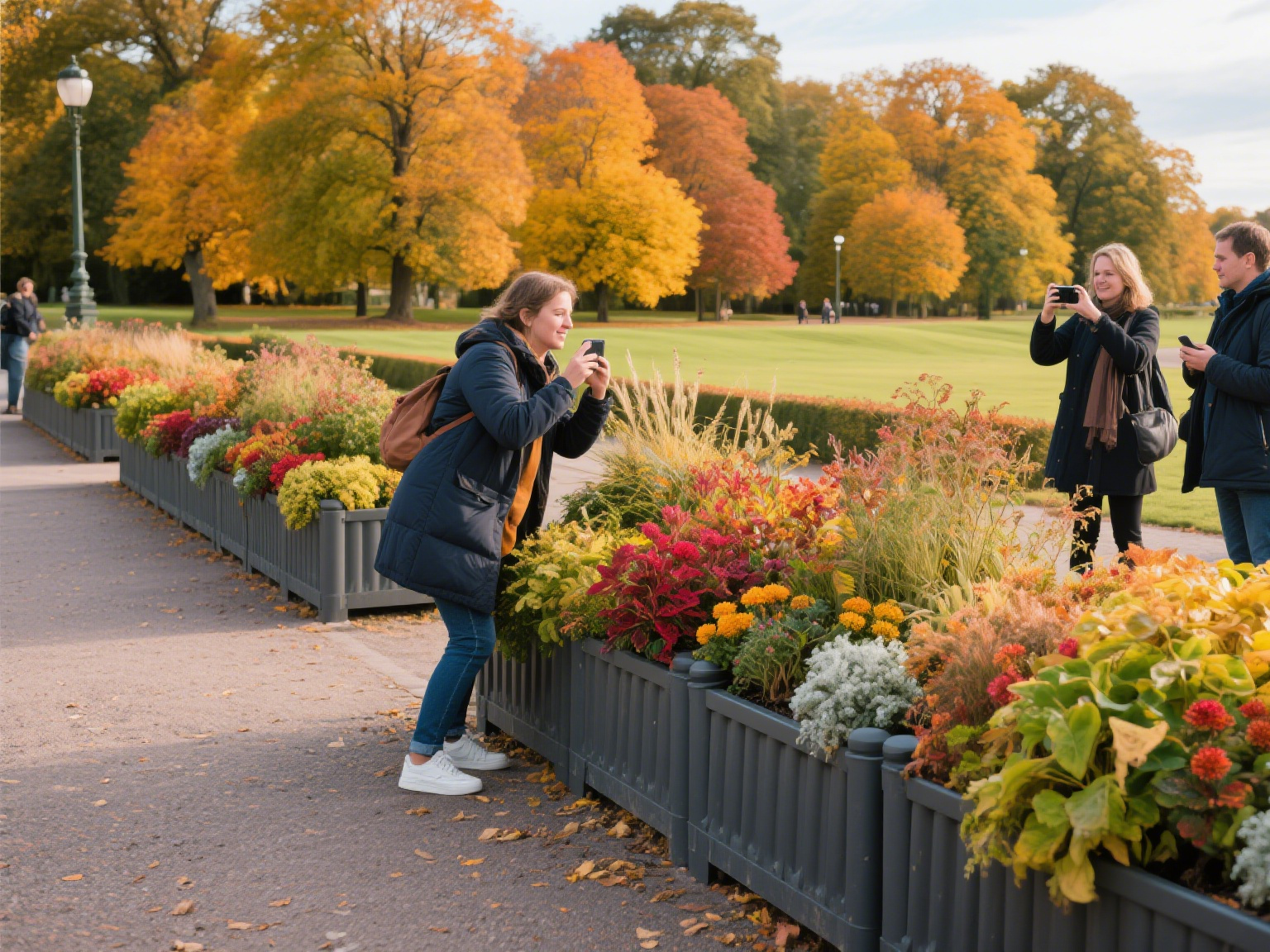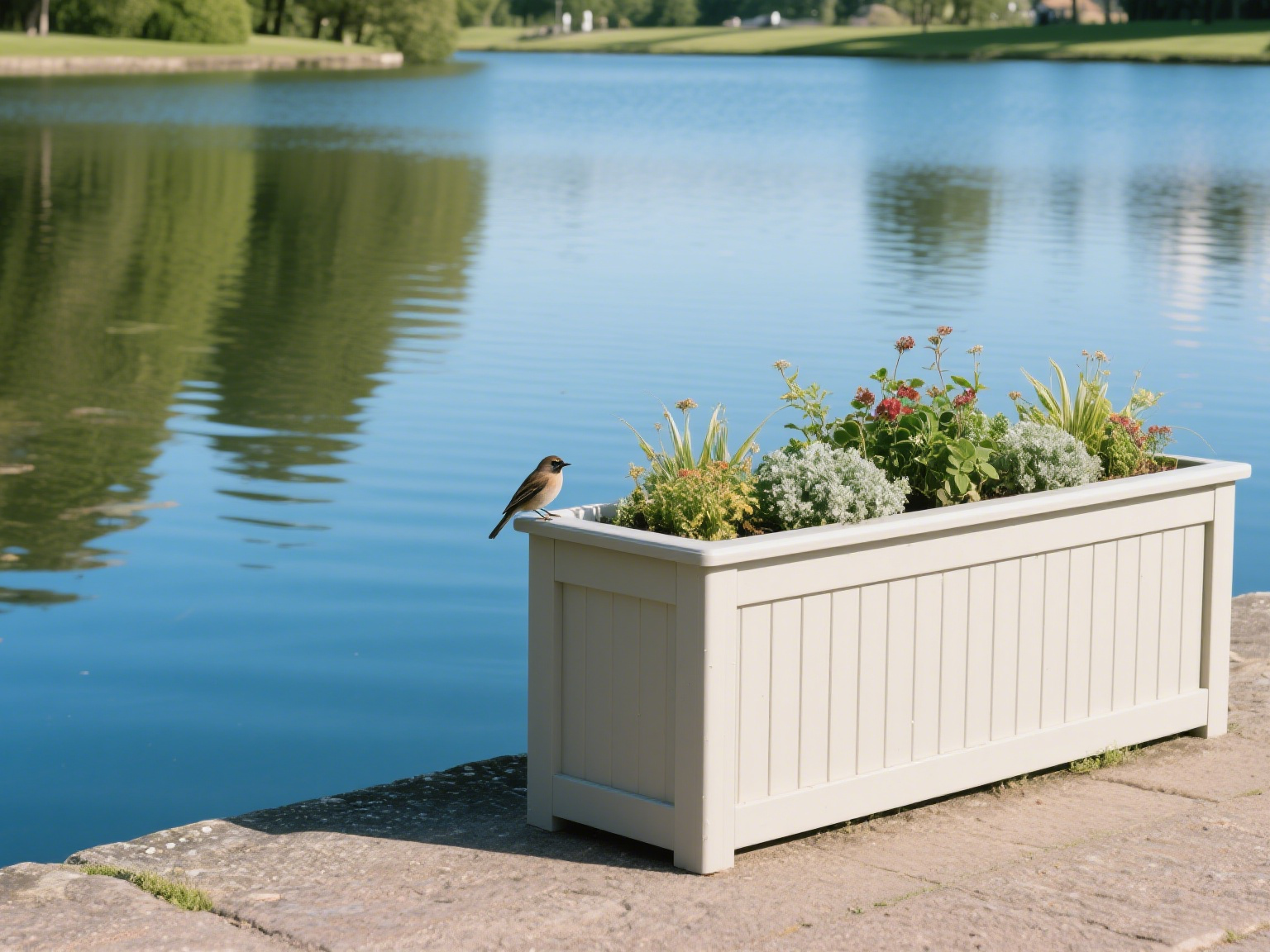When creating courtyard or balcony gardens, PVC flower boxes are highly favored for their durability, aesthetic appeal, and low maintenance. However, to ensure they function stably over time, the installation process is crucial. From pre-installation preparation to the actual setup and subsequent maintenance, every detail matters in determining whether the flower boxes can seamlessly integrate with the environment and become an ideal container for greenery to thrive.
Precise measurement and proper positioning are fundamental before installing PVC flower boxes. First, measure the dimensions of the installation area to ensure the flower boxes fit the space appropriately. For example, when installing flower boxes on a narrow balcony, consider the walking space to avoid inconvenience caused by overly large boxes. If creating a combined flower box landscape in a courtyard, measuring the spacing between each box ensures a neat and aesthetic layout. Meanwhile, selecting a location based on the growing habits of the plants is key. Sun-loving plants like roses and sunflowers should be placed in areas with over 6 hours of daily sunlight, while shade-tolerant ferns and pothos can be positioned in diffused light spots such as under eaves or beside tree shades. Choosing the wrong location may lead to poor plant growth due to insufficient or excessive light, wasting previous planting efforts.

Preparing materials and tools is equally important. When purchasing PVC flower boxes, carefully inspect the boxes for cracks, deformation, or rough edges. Inferior flower boxes not only affect aesthetics but may also have sharp edges that cause injuries and have a short lifespan. Additionally, prepare installation tools such as electric drills, screwdrivers, spirit levels, and expansion screws. For installation on wooden platforms, use wood screws; for masonry walls, select appropriate expansion bolts. Incomplete tool preparation can disrupt the installation process and compromise quality due to makeshift solutions.
During the installation, ensuring the flower boxes are stable is a top priority. When placing them on the ground, an uneven surface can cause the boxes to tilt or even overturn after planting and watering, damaging both the plants and the boxes themselves—even if the boxes are initially level. In such cases, use gaskets or bricks to raise the lower side and repeatedly calibrate with a spirit level to ensure the boxes are horizontal. For wall-mounted flower boxes, precise hole positioning is critical. Drilling too deep may penetrate the wall and damage the structure, while shallow holes may result in insecure fixing. Mark the wall with a pencil beforehand and measure whether the hole spacing matches the installation holes on the flower box. When installing expansion bolts, tighten the nuts firmly to ensure the boxes are securely hung and prevent loose falls that could pose safety hazards.

For multi-box installations, overall coordination is key. Whether arranging them in a row or in a staggered height pattern, plan the layout in advance. For example, in a commercial street’s flower box landscape, multiple boxes should be aligned in a straight line to create a neat and grand visual effect. In a family courtyard, staggered placement of different-sized boxes with flowers of varying heights can form a rich, three-dimensional landscape. During the combination process, pay attention to fixing adjacent boxes using connectors or wire to enhance overall stability and prevent displacement during severe weather like strong winds.
Leakage testing is essential after installation. Fill the flower boxes with water and check for leaks at the bottom and joints. Even minor seepage can cause root rot, while long-term leakage may damage the installation surface, such as corroding wooden floors or leaving water stains on walls. If leaks are found, repair the gaps with waterproof glue and retest after the glue dries until no leakage occurs. Additionally, inspect the fixing of the boxes by gently shaking them to check for stability. If loose, retighten the screws or adjust the fixing method to ensure the boxes remain secure during subsequent use.
Regular maintenance in later use can extend the lifespan of PVC flower boxes. Although PVC is corrosion-resistant and not easily aged, prolonged exposure to sunlight, wind, and rain can cause surface stains and fading. Wipe the surface with a damp cloth monthly to remove dust and stains. Check the fixing screws annually and tighten them if loose. If cracks appear, repair them promptly with special PVC glue. These simple maintenance steps can keep PVC flower boxes in good condition and continuously adorn living spaces.

Installing PVC flower boxes is a vital step in creating a beautiful garden, and every detail from pre-installation planning to post-installation maintenance affects the final result. Only by fully considering various factors and following specifications can PVC flower boxes become a beautiful and lasting landscape in the space, providing an optimal environment for plant growth and allowing us to fully enjoy the pleasures of gardening.
